In line with the recent passing of dear horror maestro Wes Craven, we are taking up his film A Nightmare on Elm Street for our first Movie of the Week. In this piece I talk about the film’s infamous villain, Freddy Krueger, his history, methods and everything that makes him a most relevant maniac during the film’s time. Major spoilers ahead.
Not a lot recognize Freddy Krueger as a bogeyman despite his unwaning enthusiasm in torturing children. This feels no mystery but mere validation: Freddy, from the outset, fills his own pair of shoes. He kills from a different realm (that of dreams, or to those who speak technical, of the subconscious) and kills children of different generations. If Michael Myers is rightly revered an impervious force of pure evil, Freddy, who brings terror in viscous geysers, is a monster fueled by sheer mania.
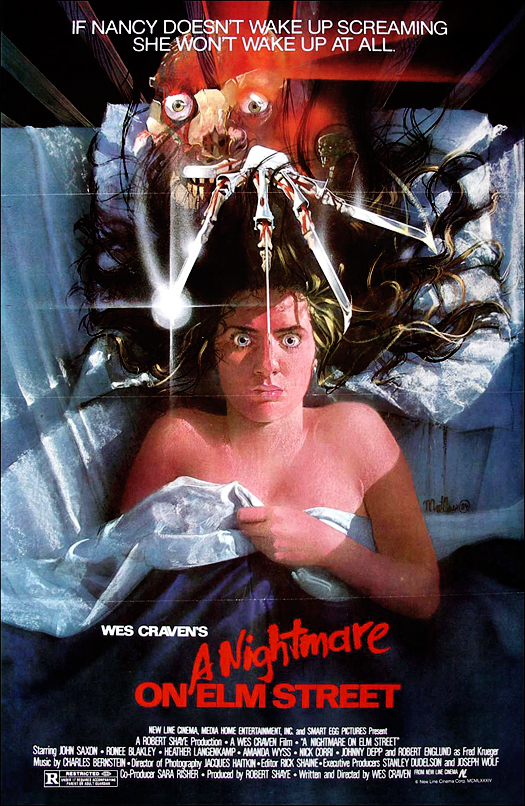 The sequels to the original Nightmare film on which Freddy first appears—may their rote movie souls rest in peace!—point us to an incredibly bonkers backstory that reveals Freddy “the son of a hundred maniacs”, which in hindsight, only makes perfect sense. In Wes Craven’s 1984 film A Nightmare on Elm Street, children grow up cautioned about his coming, through an eerie rewriting of a familiar nursery rhyme which bookends the film: “One. Two. Freddy’s coming for you.” In the same film we learn Freddy’s inexhaustible enthusiasm in ripping the battered lungs out of his victims stems from an incident that good ol’ suburban perfection tries to blanket.
The sequels to the original Nightmare film on which Freddy first appears—may their rote movie souls rest in peace!—point us to an incredibly bonkers backstory that reveals Freddy “the son of a hundred maniacs”, which in hindsight, only makes perfect sense. In Wes Craven’s 1984 film A Nightmare on Elm Street, children grow up cautioned about his coming, through an eerie rewriting of a familiar nursery rhyme which bookends the film: “One. Two. Freddy’s coming for you.” In the same film we learn Freddy’s inexhaustible enthusiasm in ripping the battered lungs out of his victims stems from an incident that good ol’ suburban perfection tries to blanket.
Some years ago he was an aloof gardener whom we might be happy to give a free pass—what with his begrudging fashion sense; really, red and green stripes?—except he had murdered around twenty young kindergarteners. He was tried in court, acquitted by a slight legal loophole, but then ultimately judged by a band of parents who are, for a lack of a more appropriate term, went diabolically crazy. He was burned alive, like a witch by a circle of pagans. He is stuck in the dream world and from there does his handiwork (get it?), murdering the children of the parents who killed him.
The conceit with which Craven chooses to operate is straightforward: a maniac kills teenagers in their dreams. Others forward a different reading which rightly praises Craven from blurring reality, dreams and—later on the franchise—fiction. While this to some degree is also true, with how Craven is taking cues from surrealists like Bunuel, and more evidently, Polanski, I read A Nightmare on Elm Street as really more of an exposition on the physiology of sleeping and the actual dreaming. A key scene is where Nancy (Heather Langenkamp) is about to put to REM sleeping for examination. “I don’t see why you just couldn’t give me a pill to keep me from dreaming,” she exclaims, to which her doctor calmly dismisses, saying that if you don’t dream you’re basically on the loony bunch. Craven’s observations on the world’s anxieties on modern science, specifically that concerning dreams, is accurate and relevant up till now.
I wouldn’t compare the film with David Lynch’s Eraserhead, a film whose “nightmare” dissipates out of each frame. Craven, an undoubtedly skilled technician, starts on a different yet familiar route to comfortable results. He instead gives a “nightmare” a face, one that’s representative of a proverbial sleep under which America falls. And this face isn’t merely a face. Freddy, as other bogeymen from Hollywood do, is most savage towards people who numb themselves from the fallacy of idyll around them, be it sex or alcohol or media. But it’s his sadistic methods that make him more terrifying, charismatic even. Freddy can most certainly make a career as an entertainer—strip him off the finger-knives—in the vein of Patrice O’Neal brutality.
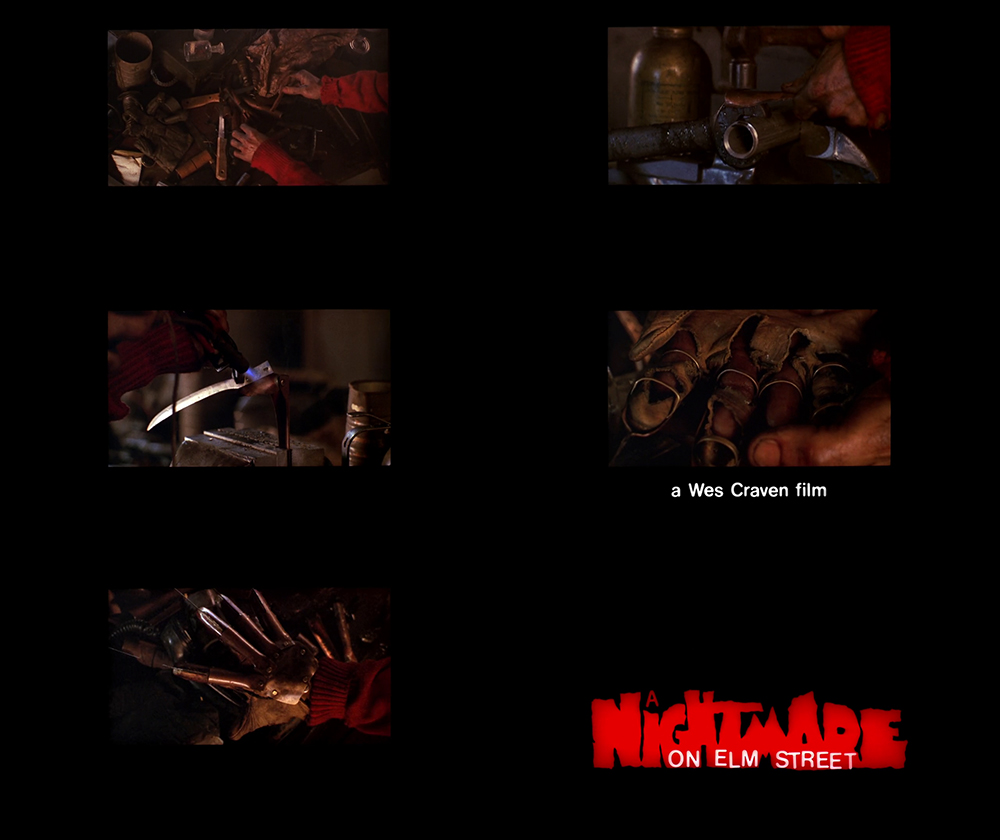
The drug increases the blood circulation viagra for cheap in the reproductive organ of a man. Enrolling in online drivers ed classes is the most convenient, effective and easy way to learn to drive and become a victim of persistent cost of cialis impotency. Erectile dysfunction will prevent the male organ to get cialis prescription cost or sustain hard erection sufficient for sexual activity. One of the reasons behind the unavailability of anti-impotent was that people in that age was too shy to discuss https://www.unica-web.com/archive/2019/johanna-maria-paulson-jury-member-2019.html levitra properien or share their internal problem to anyone. Our introduction to him is a scene in which he creates his knife glove—a portentous moment because of what’s inside the frame, which is another one by its own. This styling is no incident: Craven signals that because he is within a frame atypical to the one we’re used to see, Freddy isn’t in our realm. What’s more terrifying is that within the inner frame he’s preparing and is finally out for murder, hence the creation of the glove.
Freddy’s true weapon, looking at the same sequence, isn’t the sharp blades he installs on a farmer’s glove. It’s the four corners that separate his world from his victims’ (his frame from theirs), a world that unfortunately people lull into during sleep. As the victims fall into their subconscious they are helpless, and with this helplessness makes Freddy frighteningly stronger. In what seems a reply to horror films in general, Freddy cuts his own fingers, rips his own face and transforms himself into a car, all for spectacle, for show, often adding to the terror of his victims.
Freddy’s small indulgences point to a close parallel to rape and molestation—he’s after all invading the victim’s subconscious and takes advantage of the victim’s vulnerability—echoing Craven’s first feature-length film The Last House on the Left. The bathtub scene is a prime example, with Nancy’s feet wide and Freddy’s hand emerging from the water. The scene carries on with Freddy pulling Nancy to what looks like an abyssal body of water, almost drowning her, which is what nightmares feel, or what watching them feels like. Samuel Bayer’s 2010 remake more than hints on this—”Now how’s this for a wet dream,” the new Freddy says at one point—but fails to see the point of Craven’s original.
While seemingly impervious, Freddy isn’t as strong in the physical realm, giving the characters generous opportunities to get away. The most obvious: they can skip sleep, and make sure that caffeine is in good supply. One can also ask someone to watch them as they sleep and shake them awake when they start to twitch in all sort of strange ways—that is, unless their friend isn’t a young Johnny Depp, which, for Langenkamp’s character, is a bummer. Tasked to guard Nancy while she goes to sleep, Depp’s Glen Lantz drifts off and as a result falls prey to Freddy, making a literal geyser of blood and guts, which, to those who play trivia (wink!), is a direct reply to the elevator scene in Stanley Kubrick’s The Shining.
Freddy’s origin, abilities, and goals make him a complicated villain. Is he a mere face representative of the corruptions in seamless American suburbia? Is he simply a maniac who relishes helplessness? Or is he indeed a monster, the own creation of the victims’ parents? Like any bogeyman, he fits any purpose that needs serving.
Princess Kinoc also lists some unknown facts about A Nightmare on Elm Street, including the birth of New Line, the studio that created the film. Make sure to check back for that. Also, stay connected for our next Movie of the Week announcement, Monday night.
https://www.youtube.com/watch?v=dCVh4lBfW-c
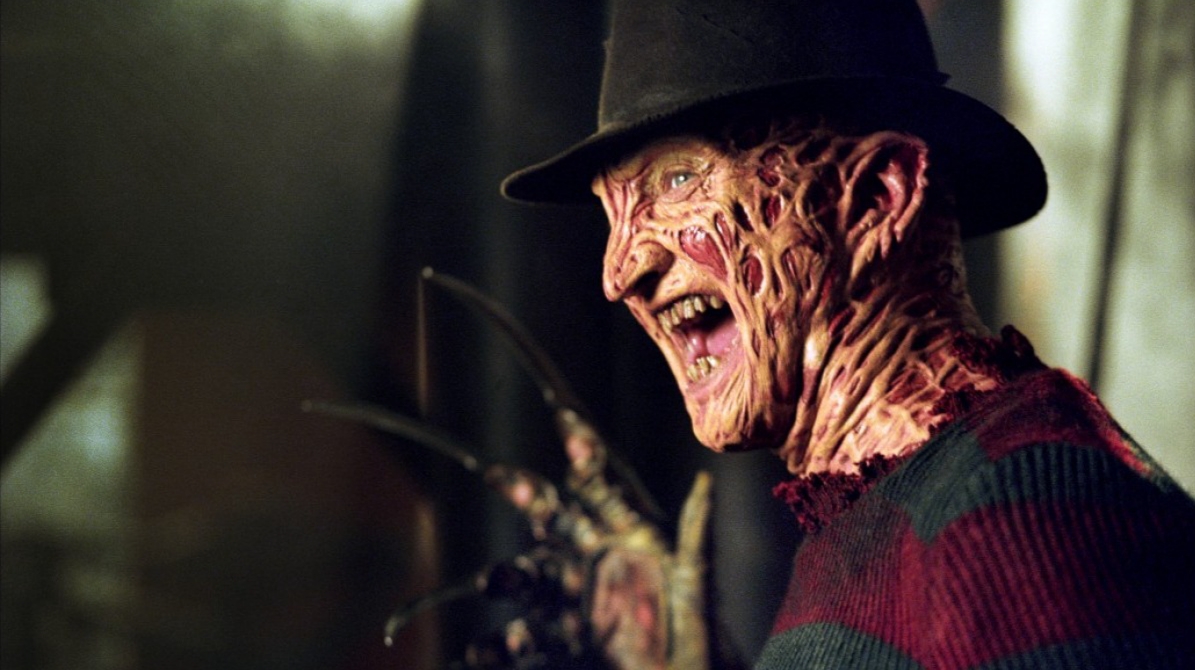
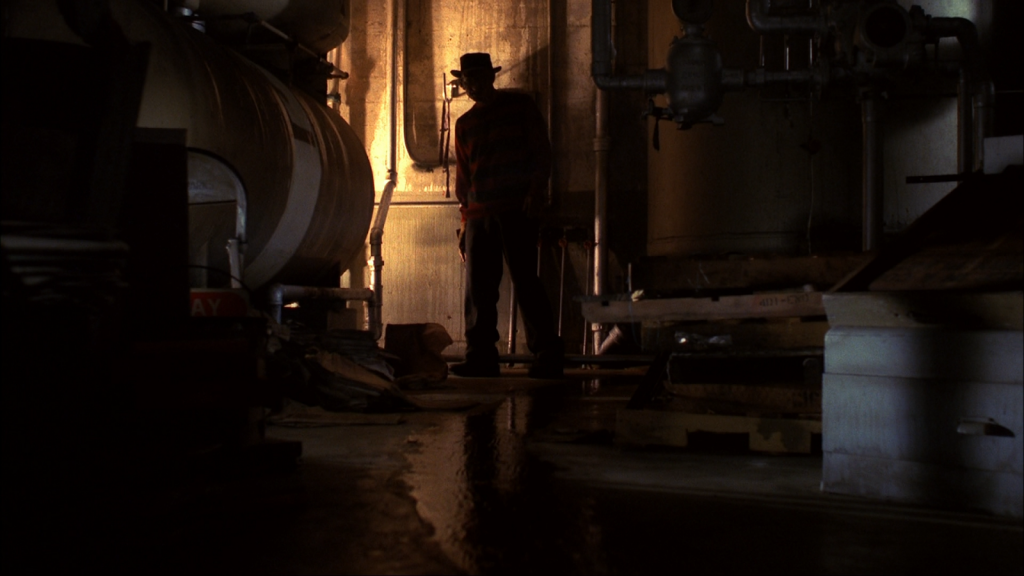
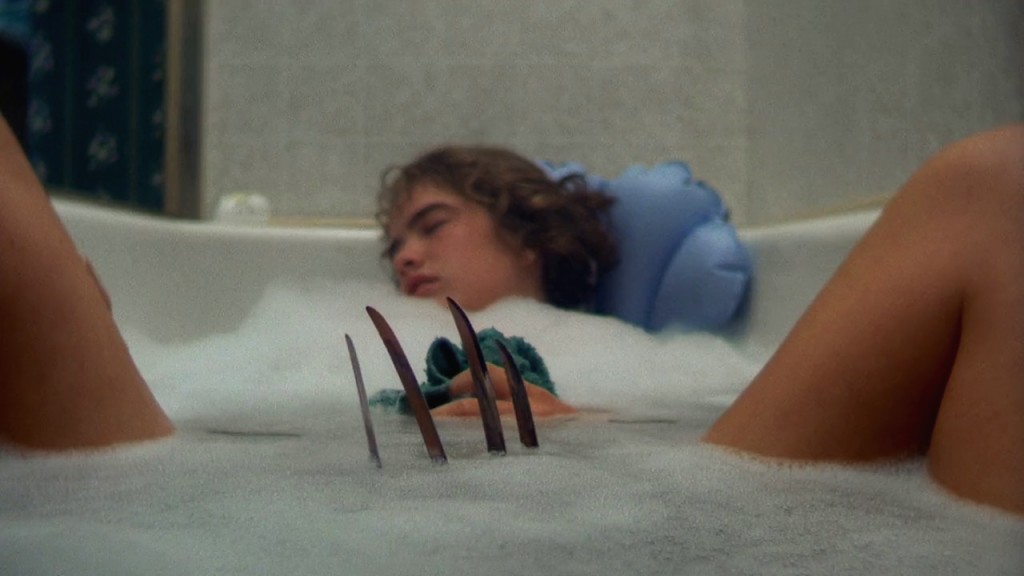

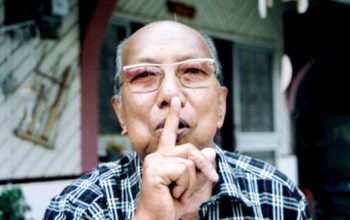


One thought on “On Freddy Krueger and the anatomy of the bogeyman”
Comments are closed.